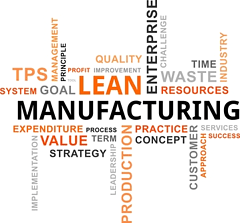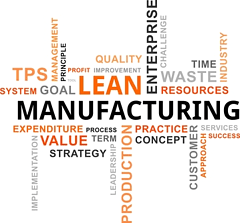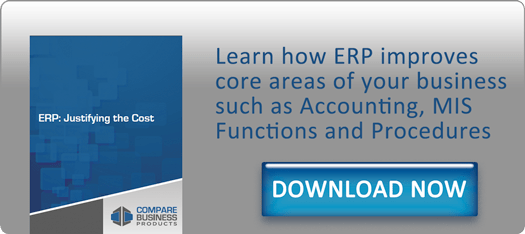 We have already looked at how ERP can help to improve processes along the supply chain and maximize outputs. Today, we want to discuss how ERP can drive Lean, Six Sigma practices to improve your business performance.
We have already looked at how ERP can help to improve processes along the supply chain and maximize outputs. Today, we want to discuss how ERP can drive Lean, Six Sigma practices to improve your business performance.
Many manufacturing companies consider ERP and Lean, Six Sigma as contrasting approaches. In fact, the two are usually considered as “mutually exclusive” with competing goals and objectives. However, to thrive in today’s economy, organizations need to focus on eliminating waste, reducing costs and improving business processes. Savvy managers are using actionable techniques to combine Lean, Six Sigma and ERP to improve their business processes.
But first, we have a caveat: selecting the best approach is not “either/or” proposition. In our work with clients from diverse industries, we’ve found that combining ERP and Lean, Six Sigma leads to faster progress and efficiency. Before we go any further, let’s look at the characteristics of Lean, Six Sigma and ERP.Lean
The major objective of Lean is eliminating waste. Lean manufacturing enables a company to produce more at a lower cost. Some of the sectors where lean techniques have produced dramatic results include industrial equipment, consumer goods, health care and manufacturing.
Six Sigma
Six Sigma methodology aims at improving product or service quality by reducing variability and improving processes. The objective of Six Sigma is to improve customer satisfaction by delivering consistent and predictable services or products with nearly zero defects.
ERP
ERP systems are at the heart of manufacturing processes today. The systems are made to handle invoicing, accounting, shipping, quality, inventory, distribution, customer service, sales, logistics, supply chain and manufacturing. Most companies modify their business processes to use the “best practice” functions delivered by the ERP software.
Improving Business Processes with Lean, Six Sigma and ERP
Combining Lean, Six Sigma and ERP enables manufacturers to improve the efficiency of their business processes. For small to mid-size organizations, implementing Lean corporate-wide and on the plant floor is a delicate balance. A disconnect emerges when proponents of Lean and Six Sigma indicate that short-term process improvements are a better investment than new technology (ERP). On the other hand, ERP vendors are marketing their products are “Lean” compliant i.e. significantly improve productivity and provide best process practices.
Differing Perception
Most top level management in manufacturing companies treat Lean, Six Sigma and ERP initiatives separately, failing to recognize that integrating the together can significantly improve their business processes.
By leveraging on the similarities of the three approaches, companies can benefit both in the short and long run. Below are some suggestions on integrating the three techniques:
- Draw up your journey of continuous improvement to include the three methods.
- Assign one set of resources to implement and improve each approach.
- Educate your core employees on the capabilities of ERP for future improvements. The most important employees that should be educated on ERP are those that facilitate Lean-like demand leveling and JIT inventory.
- Use Six Sigma for designing and measuring new processes.
- Use Lean for value-stream mapping and identifying value.
- Map ERP in your journey of integrated and continuous improvement when the current technology becomes a roadblock to improvement.
- Implement Lean technology solutions to have a firm foundation on managing Lean transactions across core value streams that extend to the customer, through production and back to the supplier.
Integrating Lean, Six Sigma and ERP will help the organization in its journey to continuous improvement. Organizations using Lean and Six Sigma tools improve their business project and at the same time, transform operations through improved ERP systems.
Managers across all sectors of the economy can use the methods and tools that Six Sigma has to offer while ensuring resources are used efficient through ERP. This combined methodology can be used on a daily basis to achieve various smaller goals, all leading towards improving productivity and increasing profits.
Before you implement ERP in your organization, you must understand the resources you have and how they can be used to meet your business goals. Six Sigma and ERP can be combined and used to meet your process goals by minimizing on the processes needed while maximizing on their effect.
 Maximizing Business Process Improvement Training with ERP">
Maximizing Business Process Improvement Training with ERP">
